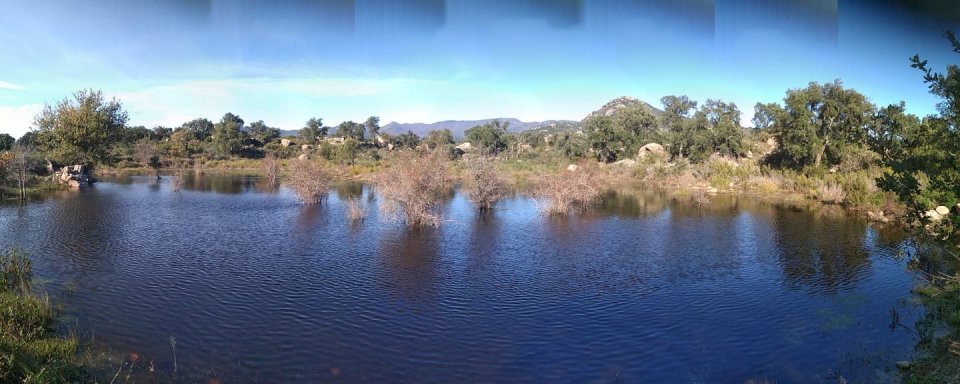
Albera ponds (Estanys de l’Albera) are situated at the foot of Albera mountains. The climate and vegetation of this area is typically Mediterranean. Although there are 23 main ponds, the pondscape consists of 241 floodable depressions with different degree of flooding (called hydroperiod), all of them of natural origin. All ponds are very shallow and temporary, some with relatively short hydroperiods (from around 2 to 9 months), and some years all the ponds can remain completely dry due to lack of rainfall. In the past, several of these ponds were drained for agricultural purposes. Nowadays low intensity agriculture is practiced in the region, mostly vineyards and olive groves. The main pressures on the pondscape are some pig farms and livestock farming, mostly cows.
Some of these ponds are priority habitats of European Habitat Directive: «3170 Mediterranean temporary ponds» and «3130 Oligotrophic to mesotrophic standing waters with vegetation of the Littorelletea uniflorae and/or of the Isoeto-Nanojuncetea». This pondscape plays an important role in biodiversity conservation because: i) it is home to priority plants for conservation, ii) it is an important amphibian breeding site, iii) it supports specialist aquatic invertebrates of temporary waters and iv) it is located on the path of one of the most important bird migratory routes across the Pyrenees.
Restauration of natural hydrological functioning through drainage removal
For centuries, inhabitants have built drainage systems to avoid water retention in the Albera pondscape. This has led to the disappearance of many ponds and the reduction of the length of time that the ponds are flooded. The aim of this NBS was to reverse this situation by restoring the natural functioning of Prat de Rosers pond.
In 2015, a project financed by the Andrena Foundation and developed by Gutina Cellar, IAEDEN, Geoserveis and UVic-UCC, made it possible to locate and block an underground drainage that has allowed the recovery of Prat de Rosers pond. This action had allowed the recovery of a habitat of community interest with its associated flora and fauna species. Moreover, this restored pond is a peaceful place to walk and relax, and to educate people about nature.
- Location of underground drainage.
- Digger hiring to drainage blockage.
- Monitoring water quality and biodiversity to evaluate the success of the action.
- Developing climate change adaptation; improving risk management and resilience
- Reduce drought risk
- Restoring ecosystems and their functions
- Increase achievements of biodiversity targets
- Increase Biodiversity
This type of action is applicable in ponds with surface or underground drainage systems.
This type of action helps to reduce the effect of climate change on these Temporary Mediterranean ponds (3170 European Habitat Directive). Climate change is leading the reduction of the hydroperiod (due to less rainfall and higher temperatures). With this kind of action, it is possible to increase the hydroperiod, or at least to compensate the effect of climate change.
